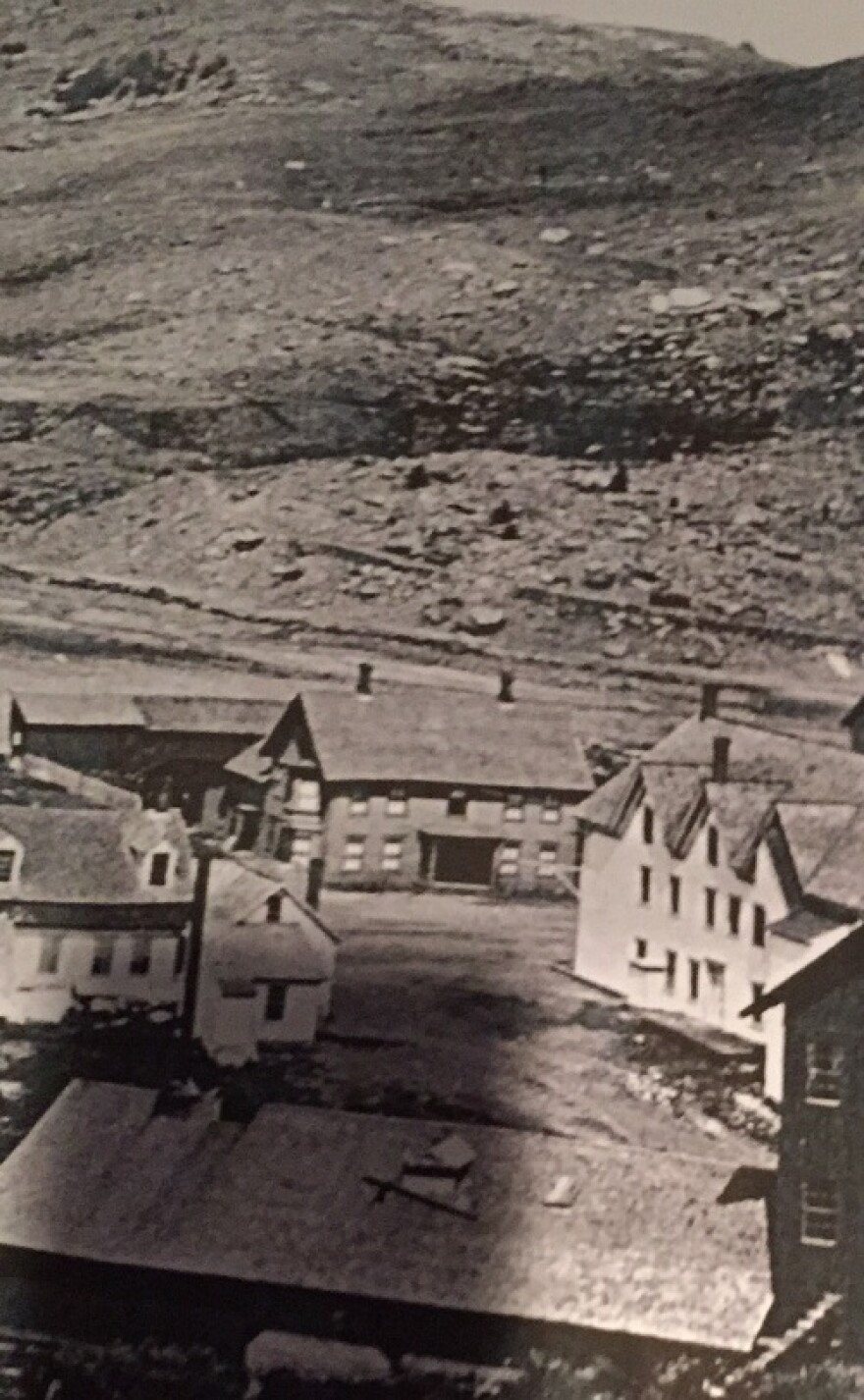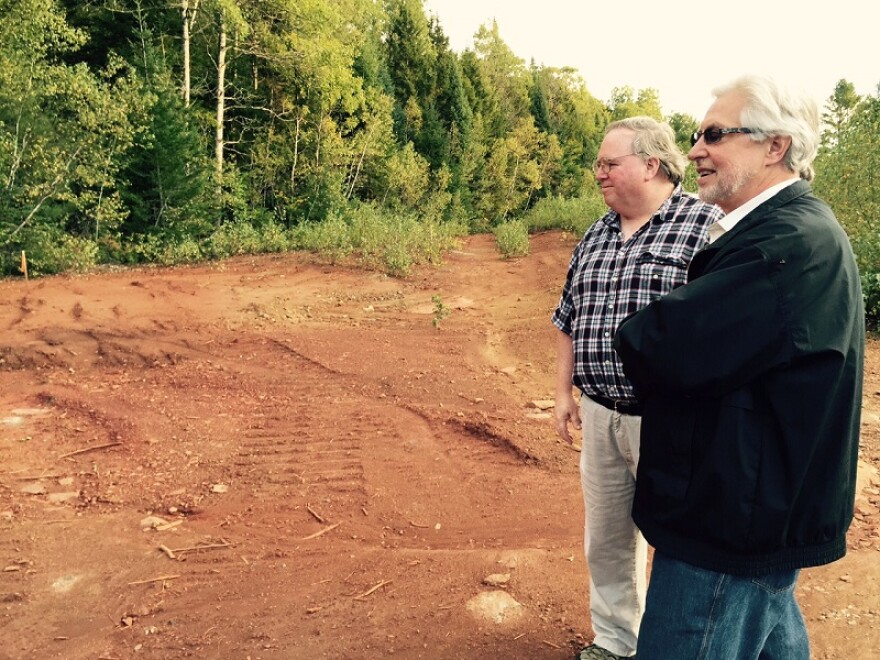The Environmental Protection Agency is gathering public comment on a plan to mitigate pollution at a long-abandoned copper mine in the Upper Valley Town of Vershire.
At the hearing in Vershire town offices Tuesday night, about 15 local residents learned about the proposed methodology and cost. There was lively discussion about the extent of environmental damage caused by the defunct Ely mine,but no one questioned the need to keep polluted groundwater from finding its way into drinking water supplies.
Ed Hathaway is EPA’s Project Manager for the Ely mine cleanup. About an hour before the hearing he checked on the site where reddish rubble glittered in the late afternoon sun.
“This is all the waste rock; it was not economic to process that material so they just cast it aside. It still contains sulfur and metals, so as the sulfur combines with water and oxygen it form sulfuric acid and leaches the metals into the brook,” Hathaway explained.
He says pollution has not spread to nearby wells, so EPA’s plan is to consolidate the waste into a landfill and cap it. The question now is what to do with contaminated water leaking on the site itself from the mine shafts. The EPA says the deepest tunnels are impractical to fill so it proposes to ban any well drilling near the most polluted part of the property, and set up a monitoring program.
“From a human health perspective the groundwater — especially in the mine tunnels — is unfit for consumption. No one drinks it today, but we certainly would want to make sure no one has an opportunity to drink it in the future,” Hathaway said.

The property covers about 1800 acres of rolling woodlands with streams. It was mined from 1821 to about 1920. One brook, Hathaway says, is biologically dead. EPA’s clean-up of the 350-acre mine site is primarily aimed at restoring the ecology. Some shafts and tunnels are home to endangered bats. Hathaway says remediation will make their habitat and drinking water safer.
But when Hathaway presented the proposal at the hearing, some residents wondered whether the site presents a big enough risk to justify spending over $3 million to fix it. By the end of a question-and-answer session, most were in favor of remediation, though some wanted to make sure the safest parts of the site would still be open to hiking and snowmobiling. A few worried about the impact of heavy traffic on back roads, as debris is removed and fill is trucked in. A local historian asked that the mine remain a cultural landmark open when possible to the public.
Vershire resident Fred Crowley had a mixed reaction about the costs and benefits of mitigation to the larger community.
“It is a polluted site,” he commented during the hearing. “I think it should be cleaned up. My concern and objection is the public money being put in at no public benefit other than cleaning up the hazardous site.”
The two current property owners were not the polluters so by law they need not help pay for clean-up. But in return for the improvement of their assets, some residents believe they should at least allow public access for recreation. Vermont's Department of Conservation supports the EPA plan and is negotiating with the landowners to help fund future monitoring of soils and water.
The public comment period ends on Oct. 8. Comments can be sent by mail, email or fax to Edward Hathaway at the address found on the project website. Remediation is expected to begin in a few years, as designs are finalized.





